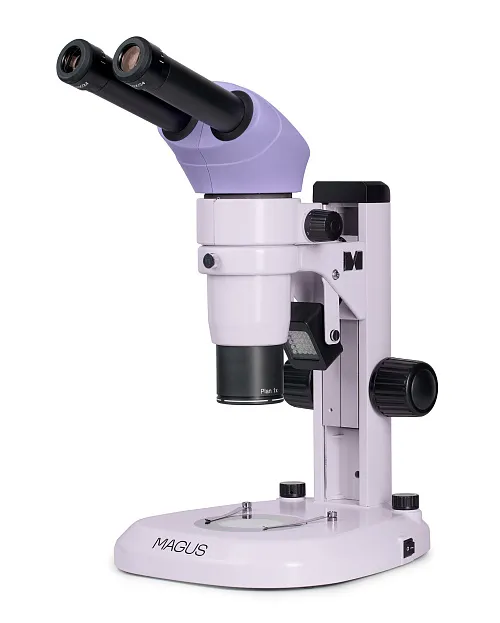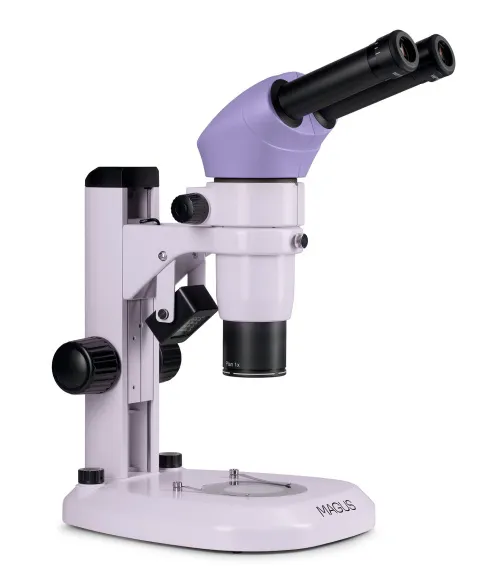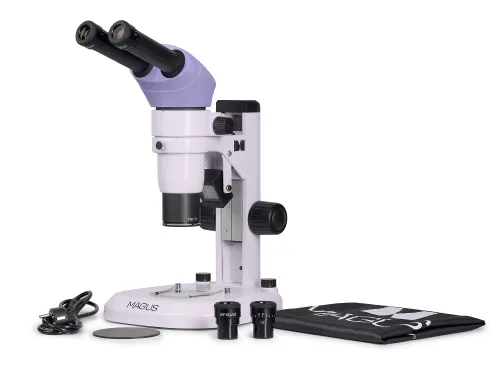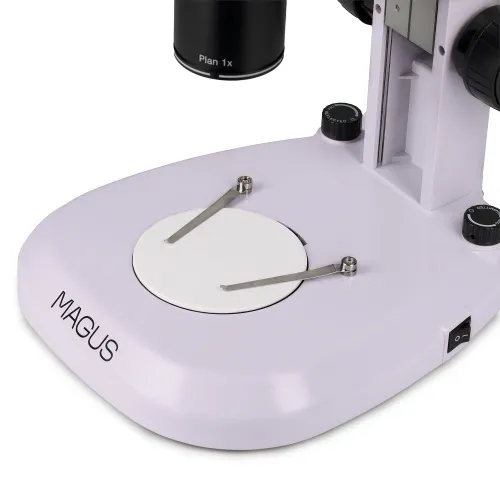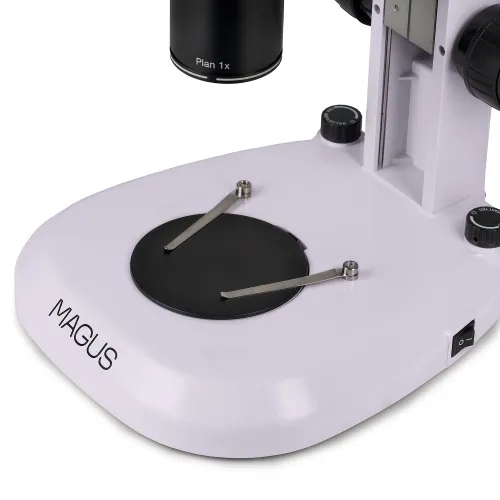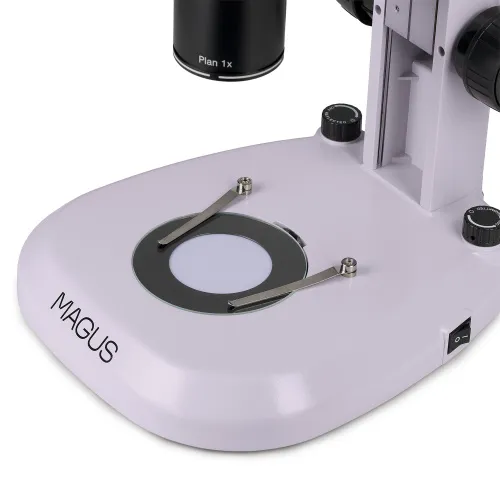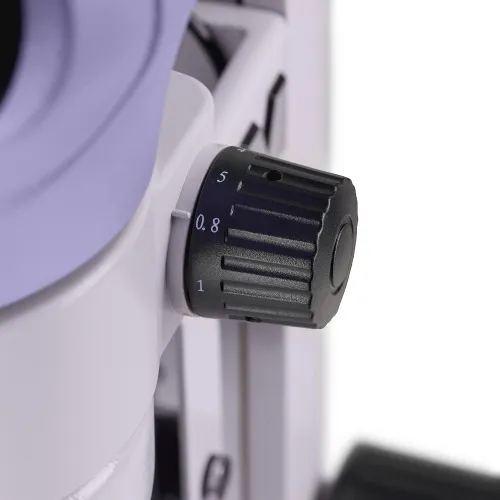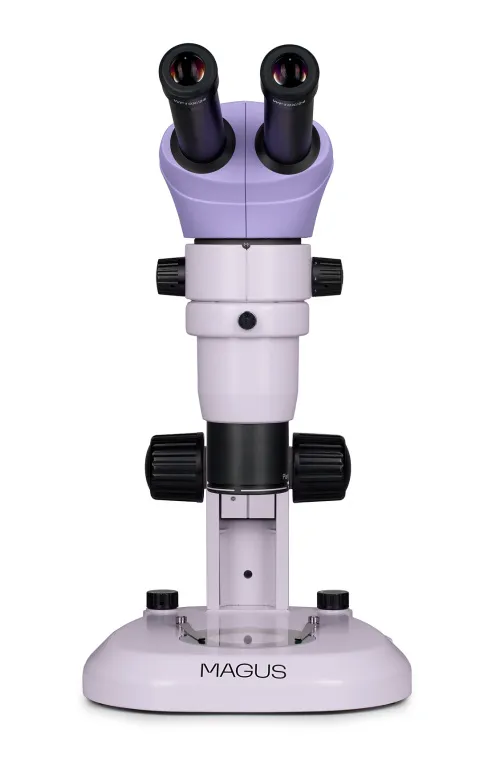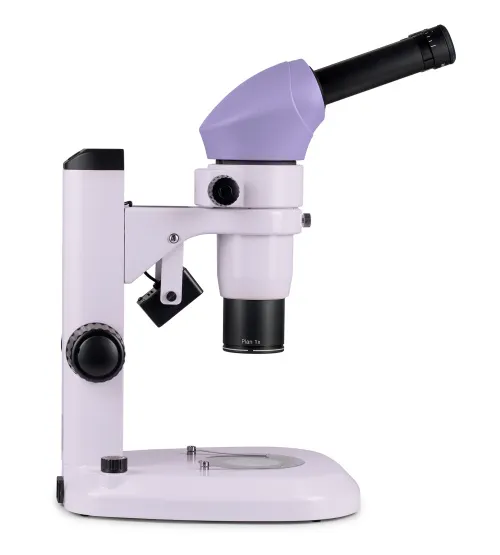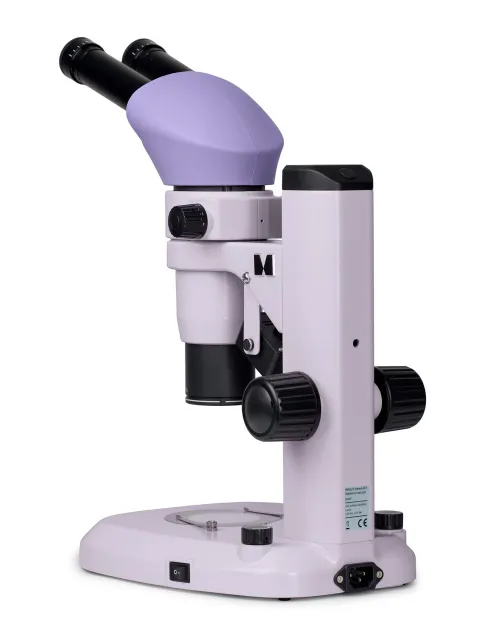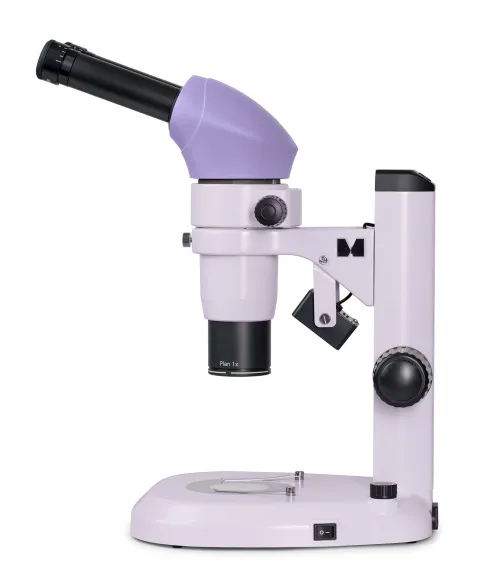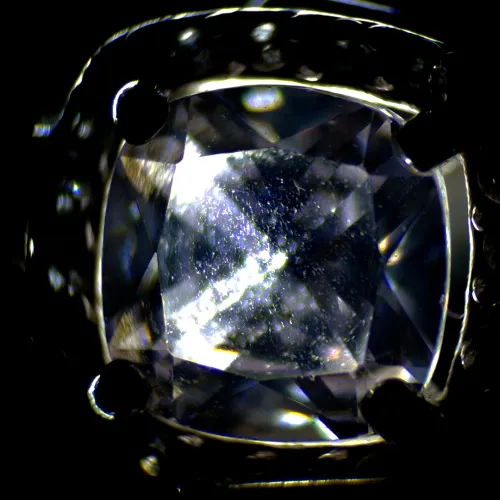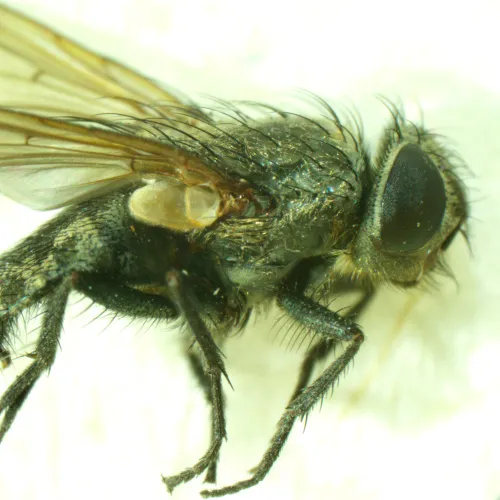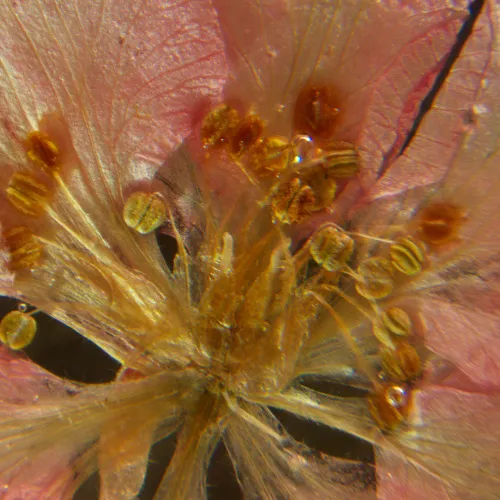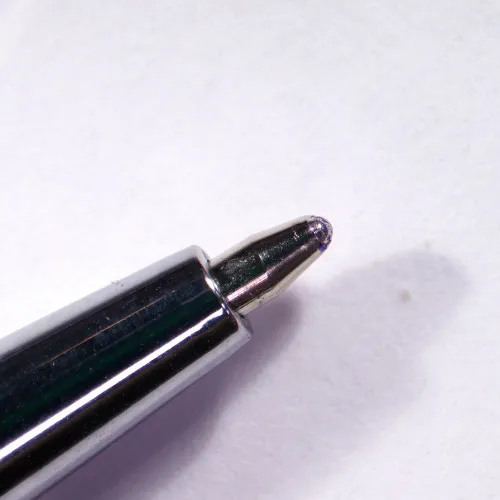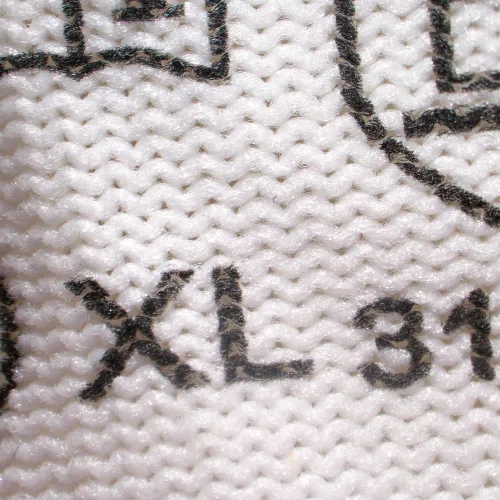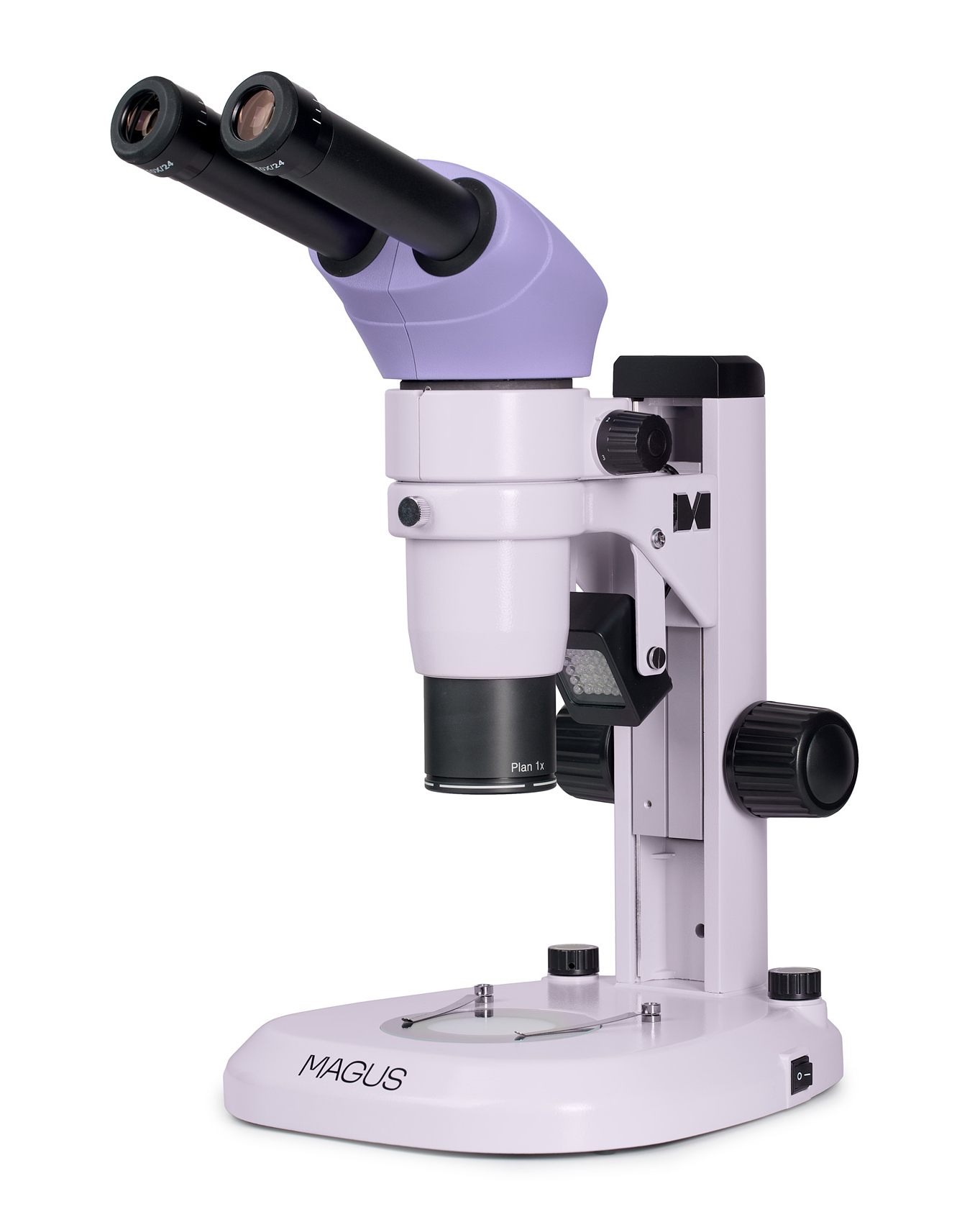MAGUS Stereo A6 Stereomicroscope
Magnification: 8–50x. CMO system. Binocular head, LED transmitted light illuminator 6W, LED reflected light oblique illuminator 3W
| Product ID | 83487 |
| Brand | MAGUS |
| Warranty | 5 years |
| EAN | 5905555019536 |
| Package size (LxWxH) | 46x43x60 cm |
| Shipping Weight | 9.1 kg |
The MAGUS Stereo A6 stereomicroscope allows you to view objects in three dimensions. Featuring the CMO (Common Main Objective) system, this is a research-grade device that can be used in various fields of science and production. It pairs well with a digital camera and allows you to produce high-quality photos and videos without distortion. The microscope works with transparent and opaque specimens and allows you to examine relief features in great detail.
The Stereo A6 model has a binocular microscope head. The tubes are installed at an angle of 20° to the horizontal plane. It allows the researcher to assume a comfortable position while working. You can install a digital camera in the microscope head, which can be used to conduct public research or reports, illustrating the story with visuals generated in real time. To complement the microscope with a camera, you will need an intermediate attachment with a photo output and a C-mount adapter.
In CMO system microscopes, two optical paths from the eyepieces join in the common main objective. It is located at a 90° angle to the surface of the specimen, which means the researcher sees the object without geometric distortions. A plan achromatic objective with large lenses provides a 11° stereoscopic angle, produces a large field of view, and creates an image with minimal aberrations. The stereomicroscope has a large working distance of 78mm that allows you to study even fairly voluminous samples.
The zoom objective simultaneously changes the focal length and magnification, zoom ratio 6:1. The image in the objective is initially upright; it does not need to be flipped by a system of prisms.
The focus is adjusted using knobs on the stand. The user can adjust the coarse focus. The travel tension can also be adjusted to suit the user.
As the microscope operates in transmitted and reflected light, the stage is equipped with two types of plates. The transparent plate is used to study transparent and translucent samples. It allows you to achieve uniform illumination of the object and diffuses light well. The black-and-white double-sided plate is needed for working with objects that are impenetrable to light: The white surface serves as a background for dark objects, and the black surface is for light ones.
The research object is illuminated by LEDs (operational life – 50,000 hours). The device is equipped with a 6W transmitted light illuminator and a 3W reflected light illuminator that operates using the oblique lighting method.
Microscope elements can be replaced to obtain other magnifications or to supplement the functionality of the device. Eyepieces of different magnifications change the final magnification of the microscope. The main objective affects the width of the field of view and the magnification of the microscope. It also determines its working distance. If an object needs to be measured, calibration slides are used in 0.1mm increments.
Key features:
- Works with three-dimensional objects and generates a 3D image
- The CMO (Common Main Objective) system produces high quality and high precision images in eyepieces and on a digital camera
- Equipped with transmitted and reflected light illuminators
- Binocular microscope head that is adapted to be combined with a digital camera
- The tubes are installed at a 20 degree angle: They ensure comfortable work for the researcher
- The main objective has a 1x magnification and a working distance of 78mm, a 6:1 zoom
- Plan achromatic optics minimize distortion and create a wide field of view
The kit includes:
- Base with an integrated transmitted light source and power supply unit
- Stand with a focusing mechanism
- Binocular head
- Zoom objective 0.8х–5х
- Plan achromatic main objective 1x
- Eyepiece 10x/22mm with diopter adjustment (2 pcs.)
- Eyepiece 10x/24mm with diopter adjustment (2 pcs.)
- Black-and-white plate
- Transparent plate
- Reflected light oblique illuminator
- AC power cord
- Dust cover
- User manual and warranty card
Available on request:
- 15x/16mm eyepiece (2 pcs.)
- 20x/12mm eyepiece (2 pcs.)
- Achromatic main objective 0.3x
- Plan achromatic main objective 0.5x
- Plan achromatic main objective 2x
- Calibration slide
| Product ID | 83487 |
| Brand | MAGUS |
| Warranty | 5 years |
| EAN | 5905555019536 |
| Package size (LxWxH) | 46x43x60 cm |
| Shipping Weight | 9.1 kg |
| Type | stereo/instrumental |
| Microscope head type | binocular |
| Head inclination angle | 20° |
| Magnification, x | 8 — 50 |
| Magnification, x (optional) | 2.4–200 |
| Zoom ratio | 6:1 |
| Eyepiece tube diameter, mm | 30 |
| Eyepieces | 10x/22mm, 10x/24mm (*optional: 15x/16mm, 20х/12mm) |
| Objectives | main objective: plan achromatic 1x (*optional: achromatic 0.3x, plan achromatic 0.5x, plan achromatic 2x); zoom objective: 0.8–5х |
| Working distance, mm | 78 (with 1х objective) |
| Interpupillary distance, mm | 55 — 75 |
| Field of view, mm | 30–4.4 (with 10x/24mm eyepiece) |
| Stage features | black/white plate, glass plate |
| Eyepiece diopter adjustment, diopters | ±5D on each eyepiece |
| Eyepiece diopter adjustment | ✓ |
| Focus | coaxial, coarse (105mm, with coarse focusing tension adjustment) |
| Illumination | LED |
| Brightness adjustment | ✓ |
| Power supply | 220V/50Hz, AC network, via power adapter 5V, 2A |
| Light source type | reflected light: oblique illuminator – 3W LED; transmitted light: 6W LED |
| Operating temperature range, °C | 5...+35 |
| User level | experienced users, professionals |
| Assembly and installation difficulty level | complicated |
| Optical scheme | CMO stereomicroscope |
| Application | laboratory/medical, for applied research |
| Illumination location | dual |
| Research method | bright field |
| Pouch/case/bag in set | dust cover |
We have gathered answers to the most frequently asked questions to help you sort things out
Find out why studying eyes under a microscope is entertaining; how insects’ and arachnids’ eyes differ and what the best way is to observe such an interesting specimen
Read this review to learn how to observe human hair, what different hair looks like under a microscope and what magnification is required for observations
Learn what a numerical aperture is and how to choose a suitable objective lens for your microscope here
Learn what a spider looks like under microscope, when the best time is to take photos of it, how to study it properly at magnification and more interesting facts about observing insects and arachnids
This review for beginner explorers of the micro world introduces you to the optical, illuminating and mechanical parts of a microscope and their functions
Short article about Paramecium caudatum - a microorganism that is interesting to observe through any microscope

